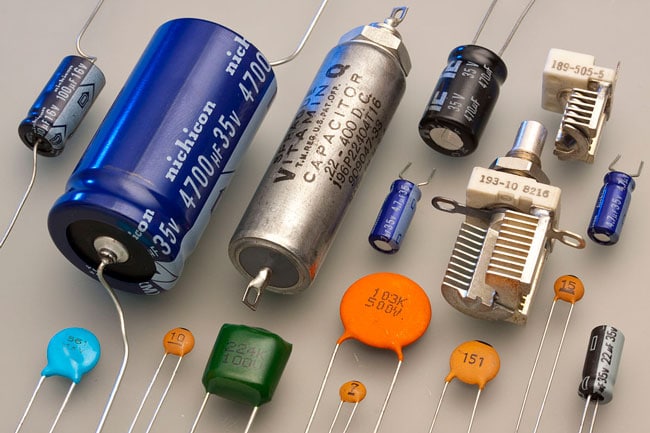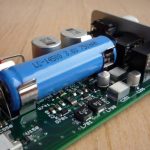There are various reasons why you may need a new car audio capacitor. One, your existing cap might have gone bad, which is not unusual. Whether in a car system or any other kind of electrical system, capacitors go bad. One of the signs of a bad cap is swelling of the cap. However, the only sure way of testing a bad cap is putting power into them, connecting a voltage meter, and seeing if or not they hold voltage. If the cap doesn’t hold any voltage, it’s simply useless.
Secondly, you may be planning to use a capacitor for the first time after careful thought on your need for a car audio capacitor. Note the emphasis on ‘careful thought’. Our experience in the car audio equipment industry has informed us that many people use capacitors wrongly. Crucial questions to ask are:
Do you really need to hook the system up with a capacitor?
Will a cap solve the power issues the car electrical system is facing?
Contrary to the assumption of many, a car audio capacitor is not some sort of extra battery. It’s temporary charge storage that just stabilizes voltage from your battery on-demand. So, even before coming to deciding the right size of the capacitor to use, it’s crucial that you know whether you need a car audio capacitor in the first place.
The main factors that increase the need for a stiffening cap are:
- A low-capacity battery
- A very powerful amplifier
- An underpowered alternator
- Long and/or low-gauge power wire
If your situation meets the above criteria, you may need a cap. You know that your system has one or several of the listed indications if you experience dimming headlights or sluggish windscreen wipers when you turn on the car stereo or when you turn up the bass. Note, however, that a cap won’t help if the system is too underpowered or your amp is too powerful. You have to first make sure that the audio system’s components are well matched in terms of power handling. If this is done but you are still experiencing the issue of dimming car lights or slow wipers, then you can consider installing a car audio capacitor.
Car Audio Capacitor Types and Sizing
Different types of capacitors exist, and they come in different sizes. Each type has its specific sizing, which means that the right size (in farad) for your system will depend on the type of capacitor you have chosen. A farad is the unit of measurement used to indicate the size of a capacitor. Cap sizes range from 1 farad to 10 farads.
The two main types of capacitors are standard electrolytic caps and hybrid caps. Standard electrolytic capacitors are the more popular option. They look like a tall soda can. If the available space permits the installation of this type of cap, expert recommendations are to install one farad for every 1000 watts of RMS of the entire system power.
Hybrid caps resemble a small amplifier. This cap type is preferred when the available installation space is small. They are also generally cheaper than standard electrolytic caps. The name hybrid originates from the mode of functioning of hybrid caps. Two different capacitors are combined to yield a longer current supply, higher storage, but slower acting carbon caps. Hybrids act like a capacitor/battery combination. For this type of capacitors, 5 farads are recommended for every 1000w of total RMS power of the system.
Which capacitor size should I get?
We brought our research on car audio capacitors together with the experience of qualified audio equipment technicians to suggest different capacitor sizes for different systems. We did so aware that each car’s electrical system is different, and narrowing your choices down to the most appropriate cap size is a process that should be handled carefully.
The table below will help you to decide what capacitor size suits your system.
| Total System Wattage | Capacitor Farad Rating |
| Less than 500 Watts | Less than 1 Farad |
| 500 to 999 Watts | 1-1.9 Farad |
| 1000 to 1499 Watts | 2-2.9 Farad |
| 1500 to 2499 Watts | 3-4.9 Farad |
| 2500 Watts and above | 5 Farad and above |
What is the implication of using a capacitor that is too big?

There exists the notion that a bigger capacitor could be better. However, it’s important to note that too small or too large capacitors may actually affect the performance of your car’s entire electrical system.
A capacitor that’s too small will still use some of the system’s power to charge but will be ineffective when required to provide the amplifier with some voltage on-demand. On the other hand, a cap that is too big may destabilize the internal power supply. Installing a too big cap can give rise to large inrush currents when a circuit is first connected to power.
Also, large voltage deviations can be created across the capacitor, and the cap can burn due to capacitor overheating caused by its ESR (its non-zero parasitic resistance). ESR degrades the capacitance of the capacitor, which in turn increases ESR further and that’s how the burning occurs. Aluminum caps are highly vulnerable to burning and thus have a relatively limited lifetime (measured in thousands of hours).
A popular way of mitigating the issue of burnt caps is using multiple parallel caps. Two caps are able to split the ripple currents, thus reducing the chances of overheating. The downside of this solution is that the total cost of the installation goes up. Using higher quality caps also reduces the failure rate. It’s for you to decide which route you want to follow, but our view is that using a higher-quality electrical component is the better option. A premium-quality cap may push the cost up by a few couples of bucks but its long-term service is more cost-effective compared with cheaper, lower-quality caps.
Final Remarks
A car audio capacitor has several advantages offers several advantages to a system that needs it. These advantages include stabilizing voltage supply to the amplifier, improving audio output, and of course eliminating the issue of dimming headlights and sluggish wipers. To enjoy these benefits, the right size of the capacitor must be chosen.
The guideline we’ve provided will set you on the right path toward a better audio experience with minimal electrical issues such as dim car lights. Remember, using a cap that’s larger than recommended is not necessarily wrong and may not damage your audio system. However, using a too bigger cap means taking the risk of putting unnecessary strain on the car’s electrical system. If you are still unsure of what size fits your system, you’d better consult a qualified and experienced professional for further guidance.
Michael Evanchuk is a San Francisco-based sound engineer with 20 years’ experience installing, troubleshooting, and repairing commercial, automotive, and household sound equipment. Evanchuk owns an auto stereo center, where he offers highly competitive car audio installation and repair services. He has written dozens of articles on different sound engineering topics, all of which have been published in leading journals, blogs, and websites.






